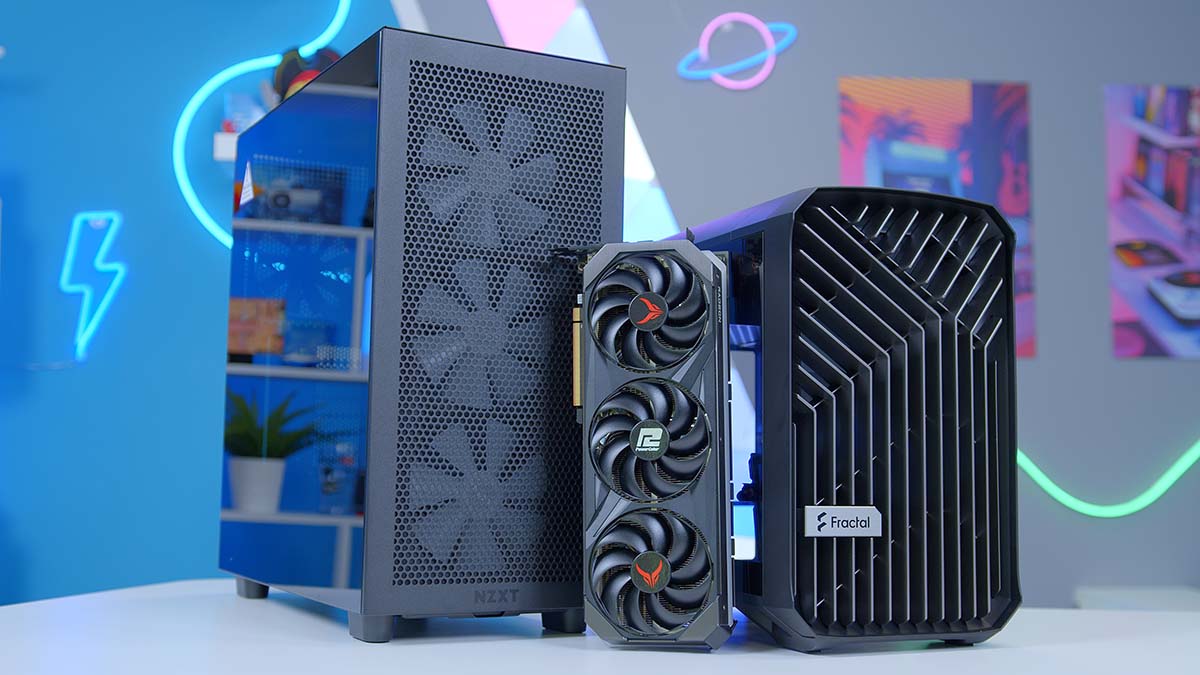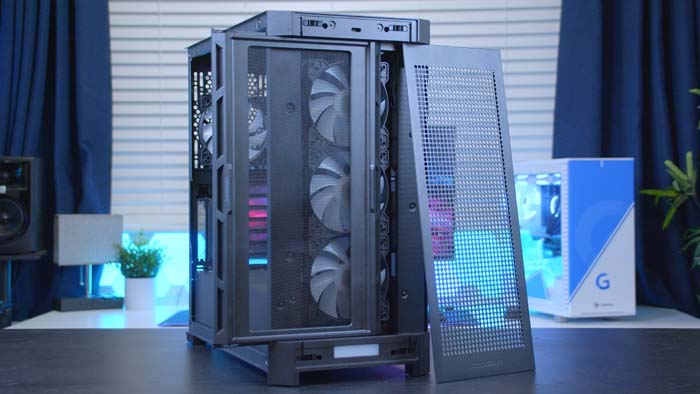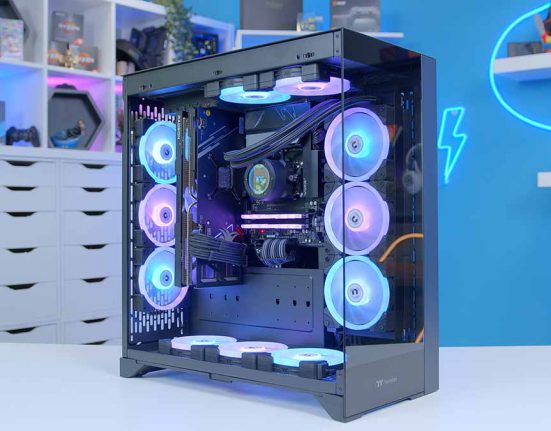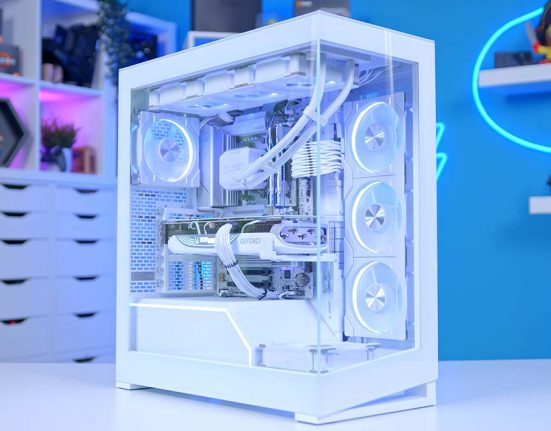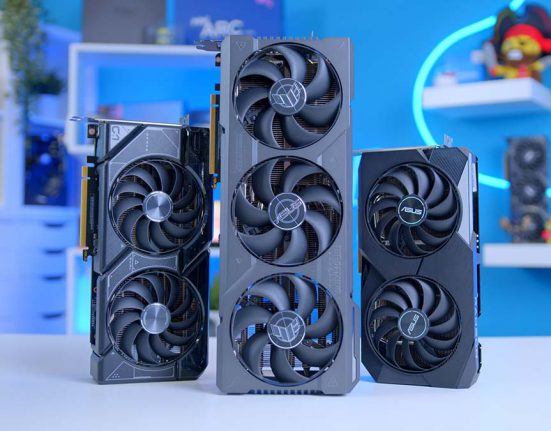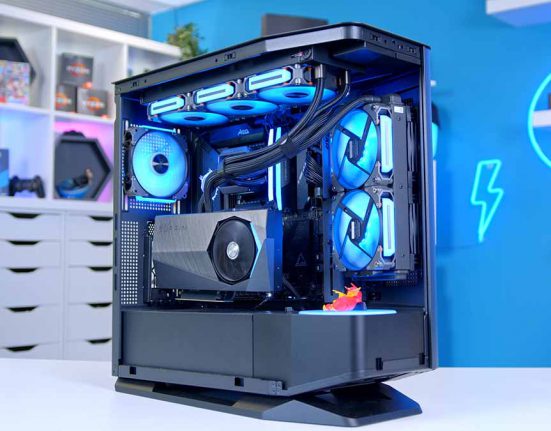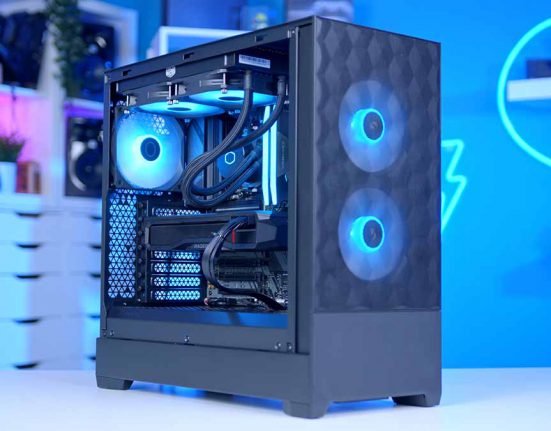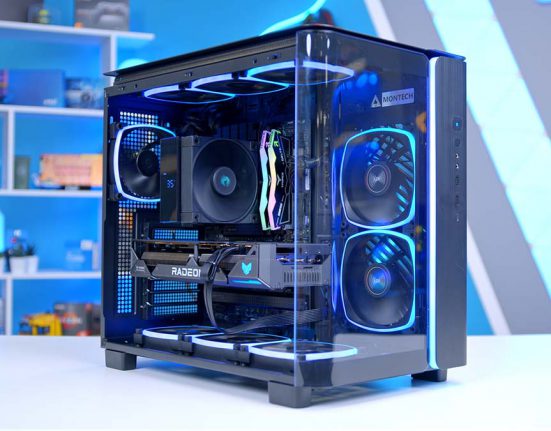Introduction
Released in tandem with the RX 7700 XT, AMD’s Radeon RX 7800 XT is a popular graphics card for mid-range consumers looking to play games at 1440p with tease. For a price that undercuts most of NVIDIA’s RTX 4000 series offerings, this GPU offers excellent performance at 1440p, as well as being capable of running games at 4K.
For anyone that is looking to pick up the RX 7800 XT in particular, you’ll need to make sure that you have a place to house this GPU, along with any other gaming components that are set to accompany it.
In this buyers guide, we’ll be testing best PC cases that can accommodate the RX 7800 XT. Our recommendations will include designs of all shapes and sizes, allowing you to build the gaming PC that best suits your needs.
All the PC Cases for the RX 7800 XT in Our Testing Roundup
1. Fractal Design Torrent Nano
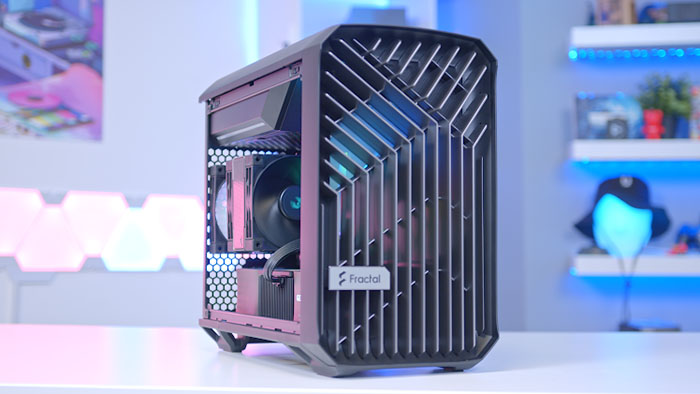
For gamers wanting to keep their build on the smaller side, we’d advise taking a look at Fractal Design’s Torrent Nano. As the name suggests, this mini-ITX PC case is a lot smaller than the typical mid-tower designs, allowing it to take up less space within your gaming setup. Additionally, this decreased form factor makes it slightly easier to move around if you wish to move your gaming rig from place to place.
Despite its smaller size, the Torrent Nano has enough clearance to accommodate most budget and mid-range graphics cards, including the RX 7800 XT, with plenty of clearance. On top of this, it can hold up to a 280mm CPU cooler, which should be more than enough to keep a mid-range gaming PC at a low temperature.
As for the design, the Torrent Nano includes a geometric front panel that gives your gaming PC a menacing look while providing benefits to airflow. In addition, the chassis is available in black or white, and consumers can choose between models that come with a tempered glass or solid panel on the side.
The major downside to a smaller PC case is that it restricts the amount of components that can be supported. This is a particular problem for high-end builders, as most premium components won’t fit into a smaller case like the Torrent Nano. For example, some of the larger RX 7800 XT AIBs may struggle with the clearance in this chassis, which could easily lead to restricted airflow that results in the GPU overheating.
Where to Buy
Buy the Fractal Design Torrent Nano on:
2. NZXT H7 Flow RGB
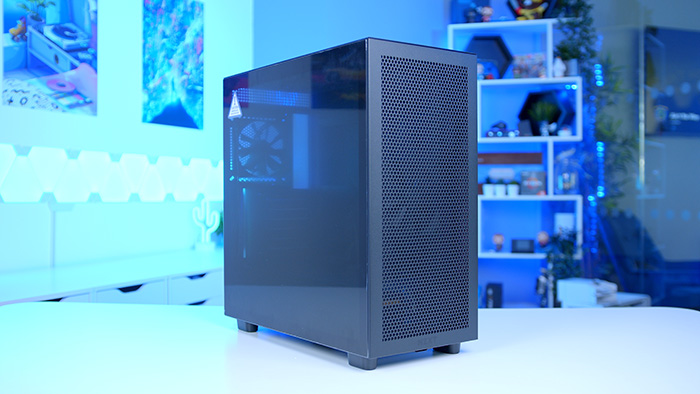
Another PC case that will optimise airflow is the NZXT H7 Flow RGB. Like many of NZXT’s products, this case has a minimalist design that acts as a blank canvas. As a result, builders can either follow the minimalistic style throughout their build, or allow other components to do the talking.
Looking at the H7 Flow in more detail, this mid-tower chassis includes plenty of support for components you’d expect to see in a standard mid-range gaming PC. This gives RX 7800 XT users an abundance of parts to choose from when putting their build together without having to worry about compatibility.
As indicated in the name, the H7 Flow puts airflow at the forefront in order to keep your components running at their best, offering lots of ventilation across the exterior. Thanks to the mesh panels and plethora of vents dotted around this chassis, this case should have no issues keeping the temperature of your build as low as possible. Plus, the H7 Flow supports CPU Coolers with up to 360mm radiators, which will only add to the cooling capabilities of your build.
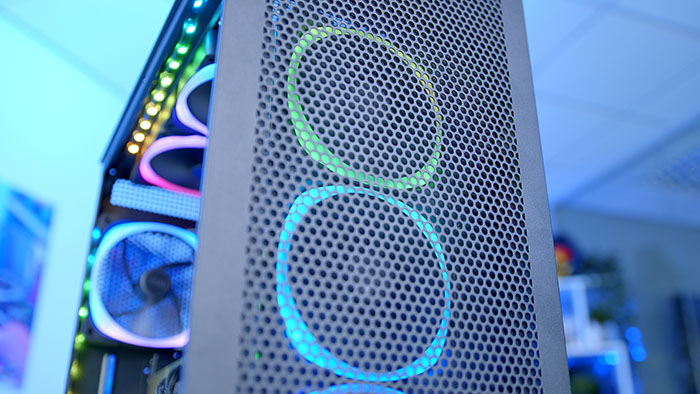
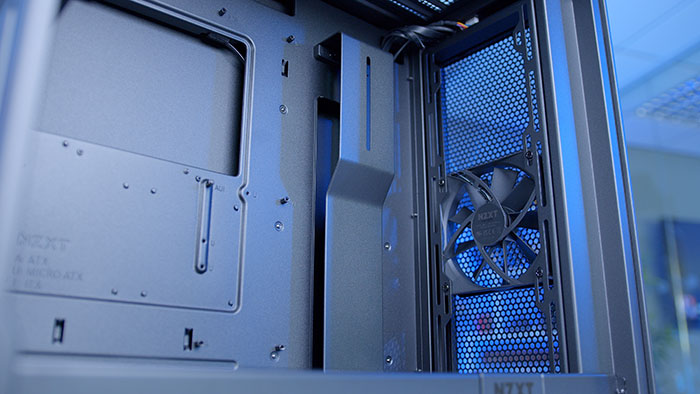
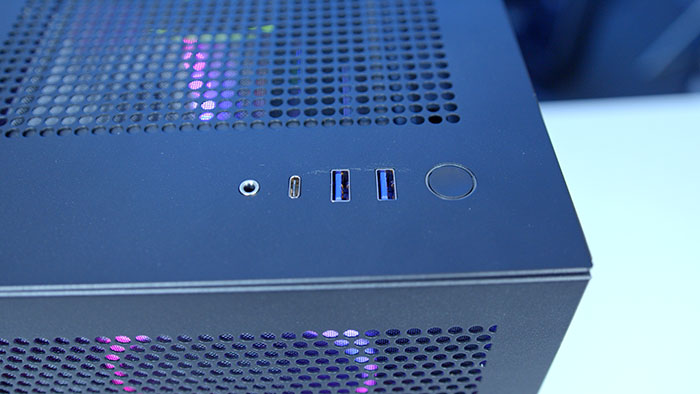
Whilst the pricing of this chassis isn’t bad compared to the rest of the market, there is a premium added due to the RGB integration and minimalist NZXT style. And due to the lack of support for more premium designs such as E-ATX motherboards and 420mm AIOs, this case will be less appealing to users looking to put the RX 7800 XT into a high-end gaming PC.
Where to Buy
Buy the NZXT H7 Flow RGB on:
3. Cougar DUOFACE Pro RGB

For gamers looking for a case that’s a little bit different, then the Cougar DUOFACE Pro RGB is certainly worth considering. Upon first glance, this mid-tower design looks like a fairly conventional gaming chassis. However, this case actually has a neat trick up its sleeve. Instead of having to choose between a mesh or tempered glass, the DUOFACE Pro RGB allows consumers to switch between these panels with minimal effort. This eliminates any worries you may have with airflow when using a tempered glass panel while providing the choice of which panel best suits your build or setup.
In terms of compatibility, the DUOFACE Pro RGB provides plenty of support for a myriad of components, including E-ATX motherboards. This is a less common inclusion for mid-tower cases, which gives this design an advantage over the competition. Additionally, this case can support up to 9 120mm fans and includes space for a 360mm CPU cooler, which should be more than enough to keep a 7800 XT system operating efficiently.
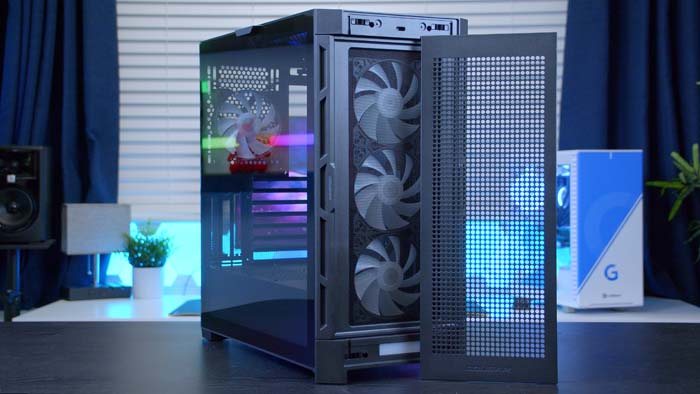
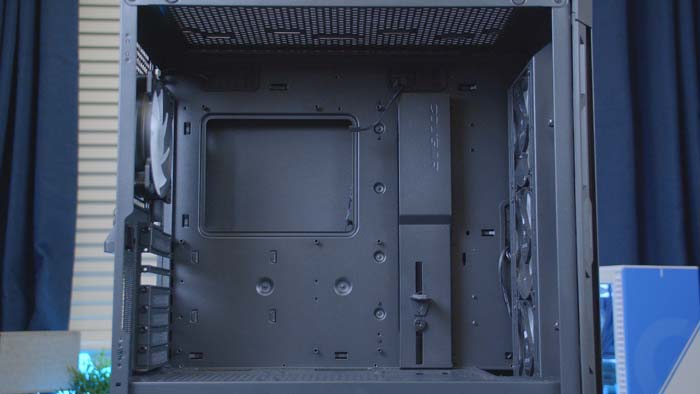
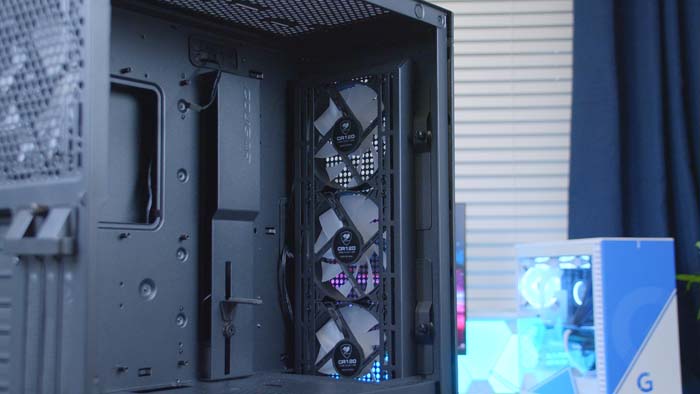
In order to support a larger range of components, this case is slightly larger than the average mid-tower design, making it less than ideal for those with limited desk space. Another major caveat we found during our research was that this case was regularly sold out amongst a range of different retailers. Therefore, it is likely that you might stumble across a similar issue.
Where to Buy
Buy the Cougar DuoFace Pro RGB on:
4. Thermaltake CTE T500 Air
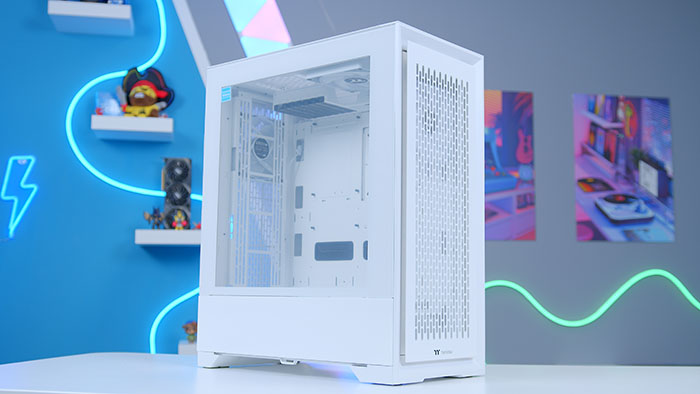
Thermaltake’s CTE T500 Air is a full tower design that looks to provide consumers with plenty of room to house a plethora of components and upgrades. As part of Thermaltake’s new CTE series, this case also puts an emphasis on airflow and water cooling, making it a great choice for those looking to build a PC with custom liquid cooling.
When it comes to support for components, the CTE T500 Air includes plenty of compartments for larger parts and upgrades, making it an ideal choice for high-end builds. Supporting up to a 420mm AIO cooler, as well as up to 11x 120mm or 140mm fans, users won’t have to worry about having enough firepower to push heat out of system.
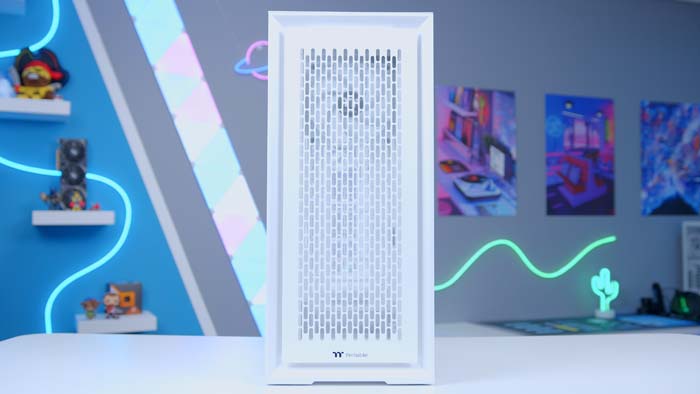
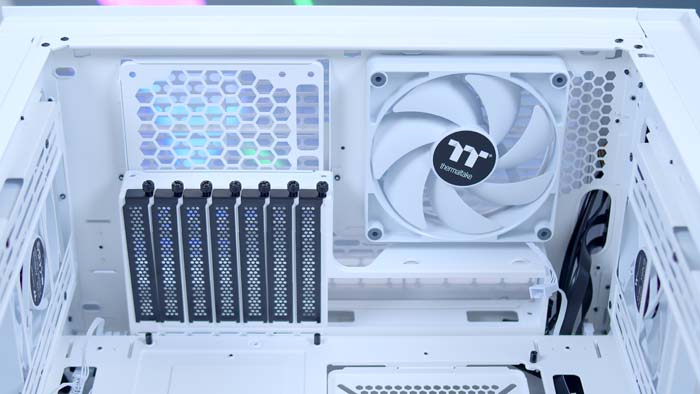
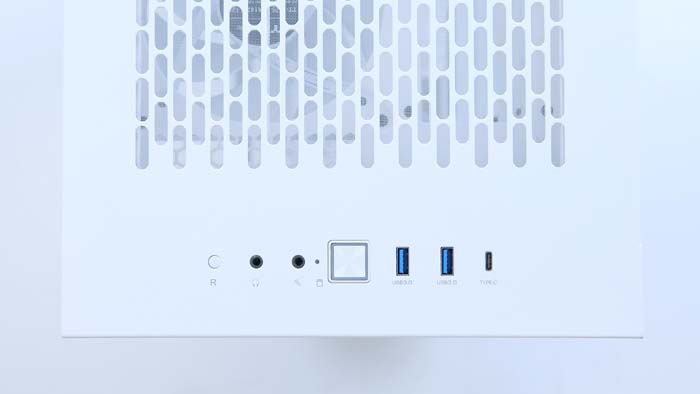
Unfortunately, the increased compatibility available with this chassis doesn’t come without a price, as the CTE T500 Air is significantly more than the other cases on this list. And despite being the largest case on this list, it comes with less GPU clearance. It still offers enough to easily support most 7800 XT designs, but it could lead to airflow restrictions with bigger models, such as Nvidia’s RTX 4090.
Where to Buy
Buy the Thermaltake CTE T500 Air Snow on:
AMD Radeon RX 7800 XT Size & Compatibility
For a more detailed look at how this graphics cards size up to the other options on the market, see the comparison chart below:
| GPU | Dimensions | Recommended Case Clearance |
|---|---|---|
| Nvidia RTX 4090 Founders Edition | Length: 304mm Width: 137mm | Length: 350mm Width: 200mm |
| Nvidia RTX 4080 Founders Edition | Length: 304mm Width:137mm | Length: 350mm Width: 200mm |
| AMD Radeon RX 7900 XTX | Length: 287mm Width: 110mm | Length: 330mm Width: 150mm |
| AMD Radeon RX 7900 XT | Length: 276mm Width: 110mm | Length: 330mm Width: 150mm |
| AMD Radeon RX 7800 XT | Length: 267mm Width: 135mm | Length: 320mm Width: 190mm |
| Nvidia RTX 4070 Founders Edition | Length: 250mm Width: 112mm | Length: 300mm Width: 170mm |
| AMD Radeon RX 7700 XT | Length: 267mm Width: 135mm | Length: 320mm Width: 190mm |
| Nvidia RTX 4060Ti Founders Edition | Length: 250mm Width: 112mm | Length: 300mm Width: 170mm |
| Nvidia RTX 3090Ti Founders Edition | Length: 336mm Width: 140mm | Length: 390mm Width: 200mm |
| Nvidia RTX 3070 Founders Edition | Length: 242mm Width: 112mm | Length: 300mm Width: 170mm |
How We Tested the Best PC Case for the RX 7800 XT
In order to test and evaluate the best PC cases to house AMD’s Radeon RX 7800 XT, there are a number of factors that we take into account, these are:
- Form factor
- Design Choices
- GPU Clearance
- Thermals
- Aesthetic
- Value for Money
Frequently Asked Questions
Is the RX 7800 XT Good for Gaming?
Yes. The RX 7800 XT offers exceptional gaming performance at 1440p, along with strong gameplay at 4K to boot. This makes the RX 7800 XT a solid choice in the current market.
Will the RX 7800 XT Fit Into a Mini Tower Case?
It will honestly depend on the card you’ve picked up. A larger AIB may struggle with clearance in a smaller chassis, but any designs that are similar to the reference card should fit.
Conclusion

Best PC Case for RX 7800 XT: Cougar DuoFace Pro RGB
Out of all of the designs that we’ve recommended for a RX 7800 XT build, the Cougar DuoFace Pro RGB stands out as our favourite chassis for this GPU. Including support for a range of components, plenty of ventilation, and an innovative interchangeable front panel, this case provides the best blend of versatility and style for any mid-range or high-end gaming rig.
Read our full RX 7800 XT coverage, or Buy the Cougar DuoFace Pro RGB on Amazon


